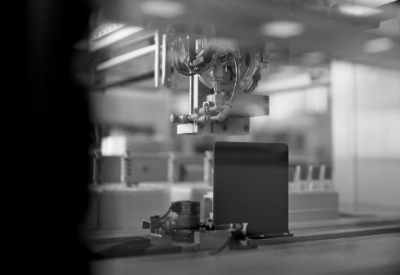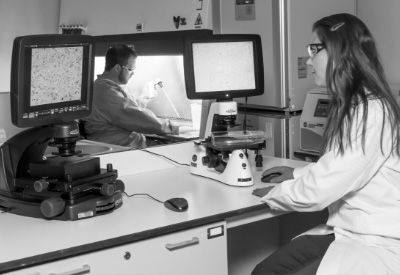
Batteries generate internal power that keeps devices functioning. This means batteries must be able to travel anywhere we send machines. In the case of Earth’s poles, the depths of the ocean, and open space, these locations experience extremely low temperatures.
Low temperature batteries are becoming a necessity in these fields of exploration. Even for more practical purposes—like outdoor devices in the winter—there is a growing demand for power sources that do not falter when exposed to cold weather.
City Labs has developed a series of batteries that can endure temperatures well below freezing without sustaining any permanent damage. We hope that these power sources will help to address long-standing issues in cold weather technology.
How Does the Cold Affect Battery Performance?
Batteries have been known to perform poorly in cold environments. Car batteries have a tougher time starting in the winter, cell phones run out of power faster, and there are a variety of issues stemming from the interaction between temperature and conductivity.
In most cases, the colder it is, the worse a battery will function. Long periods of extreme cold can even cause irreversible damage to power sources that are not properly equipped.
Slows Down Chemical Reactions
Lithium-ion batteries rely on chemical reactions to create a charge. The particles in the reaction move slower when they are exposed to colder temperatures. Slower particles mean less power and a smaller charge.
When batteries are in cold environments, they may struggle to provide the necessary energy for a device. Although the slowed reaction rate may lead to a slightly longer lifespan, the battery will not be as efficient.
Irreversible Damage in Non-Use
Due to internal reactions giving off heat, batteries will typically warm up during use. Constant use of a device—even in colder climates—can protect the battery from degrading. However, when batteries are left idle in the cold for long periods of time they can sustain permanent damage.
Lithium-ion batteries in the cold undergo physical changes that damage their capacity. Components within the battery contract, making it difficult for electrons to transfer between electrodes. When the electrons cannot pass at the target rate, the lithium begins to congregate and form a plating around the negative electrode. Large lithium dendrites can grow on this plating and puncture the diaphragm, leading to battery failure.
If a battery needs to be stored, it should be kept in a mild temperature environment and load tested before future use. If a battery has sustained permanent damage from the cold, it will likely not be able to function even when the temperature returns to normal.
How Are Cold Weather Batteries Different?
A variety of strategies have been used to keep batteries from getting too cold. Some cold-weather batteries use different materials, others have insulation. These batteries can output steady power in colder temperatures for longer periods of time compared to traditional batteries.
When buying batteries for cold weather applications, it’s important to check a battery’s temperature range and intended use. Some will perform much better than others in the cold. Still, these cold weather electrochemical batteries leave room for improvement.
City Labs NanoTritium™ Batteries Work in Low Temperatures
City Labs has developed low-power betavoltaic batteries that generate energy from the decay of tritium. The kinetic energy of the beta particles is transferred into electricity. This efficient model has led to a reliable source of power for more than 20 years.
Our batteries can also slowly charge a secondary power storage (e.g. capacitors) that can provide power bursts for certain microelectronic devices.
City Labs NanoTritium™ Betavoltaic Batteries have been tested between -55 to 150 degrees Celsius. While extreme temperatures in either direction may temporarily speed up or slow down the charge of the secondary storage, the betavoltaic power source will not sustain any permanent damage within this temperature range. Some secondary storage systems, such as capacitors, have a wide operating temperature range.
Low Temperature Batteries for Space
With no atmosphere to trap heat, space is one of the coldest places we know. In open spaces, heaters are necessary for batteries, yet those batteries are bulky. It’s expensive in terms of power and money to help the battery maintain temperature in cold weather. But spacecraft cannot afford to have a low output.
City Labs makes tritium heaters to keep batteries at the proper temperature. These heat sources are much more practical and help to keep the conventional battery cells at optimal performance.
Choosing the Right Battery for Your Devices
When deciding on the ideal battery for your device, you must consider the environment in which these batteries will be working. Many locations are difficult to access. It could be dangerous or require a large number of resources to try and repair machines at the bottom of the ocean or in freezing temperatures.
Our betavoltaic technology is designed to withstand tough conditions for long periods of time. Not only can our batteries continue to function in locations with extreme temperatures, they can also do so for decades. If you’re looking to invest in a product that will provide as much reliability as it does financial return, look no further.
Whether you need to power small sensors in some of our planet’s coldest regions or you’re just looking for a durable battery to use in your laboratory, City Labs NanoTritium™ Batteries could be your solution.
Get in touch with our CEO today to discuss the possibilities of betavoltaic power sources.
The Nuclear Battery Company With a Vision
Ready to power your next innovation or learn more about our technology?
Contact Us Today




